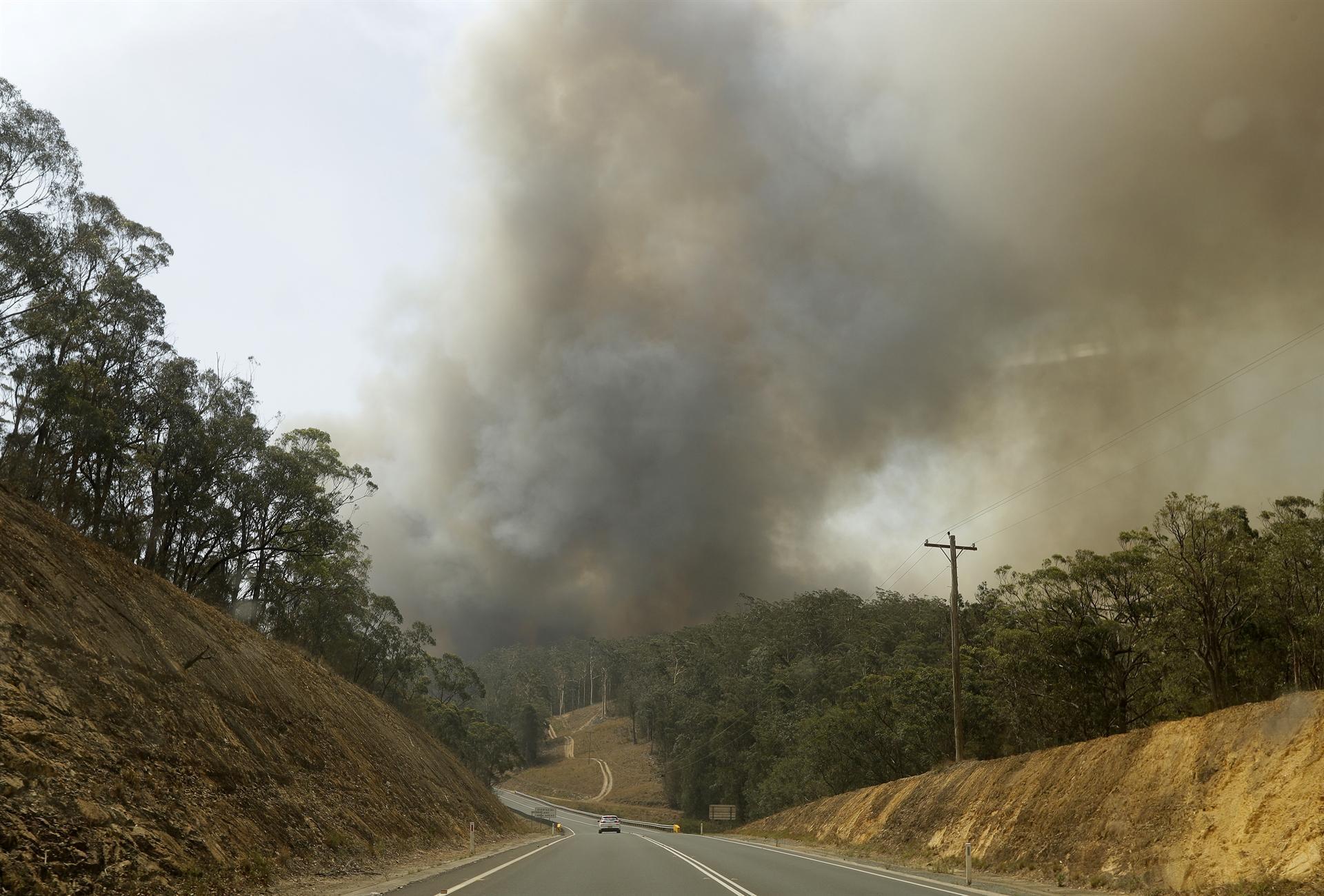Bushfires rage out of control across southeast Australia
SYDNEY/MELBOURNE-Reuters

Bushfires burned dangerously out of control on Australia's east coast on Jan. 4, fanned by high temperatures and strong winds that had firefighters battling to save lives and property, as a change in wind conditions merged several large fire fronts.
By late evening, Victoria had 14 fires rated at emergency or evacuate warning levels, and New South Wales had 11 rated emergency, with more than 150 others burning across the states. New fires had started, and others had broken containment lines.
"There are a number of fires that are coming together - very strong, very large, intense fires that are creating some of these fire-generated thunderstorms," New South Wales Rural Fire Service (RFS) Commissioner Shane Fitzsimmons said at an evening briefing.
"And unfortunately we've still got many hours to go of these elevated and dangerous conditions."
The Bureau of Meteorology (BOM) said conditions were deteriorating rapidly as a gusty southerly wind change pushed up the coast and smoke plumes from the fires triggered storms.
Authorities are worried the fires could turn out to be worse than New Year's Eve when they burnt massive tracts of bushland and forced thousands of residents and summer holidaymakers to seek refuge on beaches.
In Victoria, Premier Daniel Andrews said while conditions were difficult, the job of firefighters had been made easier by tens of thousands of people following advice to evacuate.
It may be on Jan. 5 or later before damage assessments can be made. Prime Minister Scott Morrison put the national death toll from the current fire season, which began in September, at 23. Twelve of those are from this week's fires alone.
In updates, the NSW RFS repeatedly delivered the same blunt advice to those who had not evacuated at-risk areas: "It is too late to leave. Seek shelter as the fire approaches."
Residents used social media to post photos of the sky turning black and red from the smoke and glare of the fires, including in the Victorian town of Mallacoota, where around 1,000 people were evacuated by sea on Jan. 3.
The first of those evacuees arrived near Melbourne on the morning of Jan. 4 after a 20-hour journey by boat and a second ship with about 1,000 people landed in the afternoon.
The federal government announced an unprecedented call up of army reservists to support firefighters as well other resources including a third navy ship equipped for disaster and humanitarian relief.
Andy Gillham, the incident controller in the Victorian town of Bairnsdale, said the area had avoided the worst of the fires on Jan. 4 but stressed this was an exceptional fire season.
"In a normal year, we would start to see the fire season kick off in a big way around early January and we're already up towards a million hectares of burnt country. This is a marathon event and we expect to be busy managing these fires for at least the next eight weeks," he said.
Following are highlights of what is happening across Australia:
- Temperatures topped 45C (113F) in much of the Sydney metropolitan area, with Penrith recording a high of 48.9C (120F) according to the BOM. Canberra, the national capital, recorded a temperature of 44C just after 4 p.m., which the chief minister said was a record for the territory.
- As the fires have flared, many towns have been isolated as major and minor roads are closed. Some fires are generating their own storm systems, which create the risk of lightning strikes generating new fires.
- A late southerly wind change on Jan. 4 dramatically lowered temperatures, but also brought wind gusts of 70-80 km per hour (43-50 miles per hour) that caused some major fires near the border of Victoria and New South Wales states to merge and strengthen.
- In South Australia, two people died on Kangaroo Island, a popular holiday spot not far off the coast. South Australian Premier Steven Marshall said more than 100,000 hectares (247,000 acres) have burned there, about one-quarter of the total area.
- Six people remain unaccounted for in Victoria, Premier Andrews said on Jan. 4, down from 28 reported on Jan. 3.
- The focus on Jan. 4 is preventing more loss of life, authorities said. National parks have been closed and people urged earlier this week to evacuate large parts of NSW's south coast and Victoria's northeastern regions, magnets for holidaymakers at the peak of Australia's summer school holidays.
- Morrison confirmed that his visit to India and Japan scheduled for mid-January had been postponed due to the fires.
- More than 5.25 million hectares (13 million acres) of land have been burnt this fire season.
















